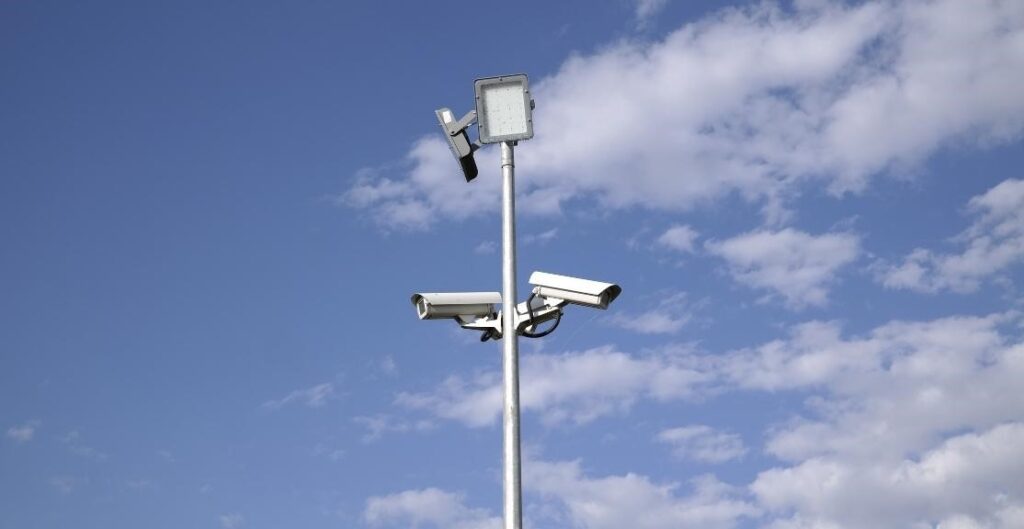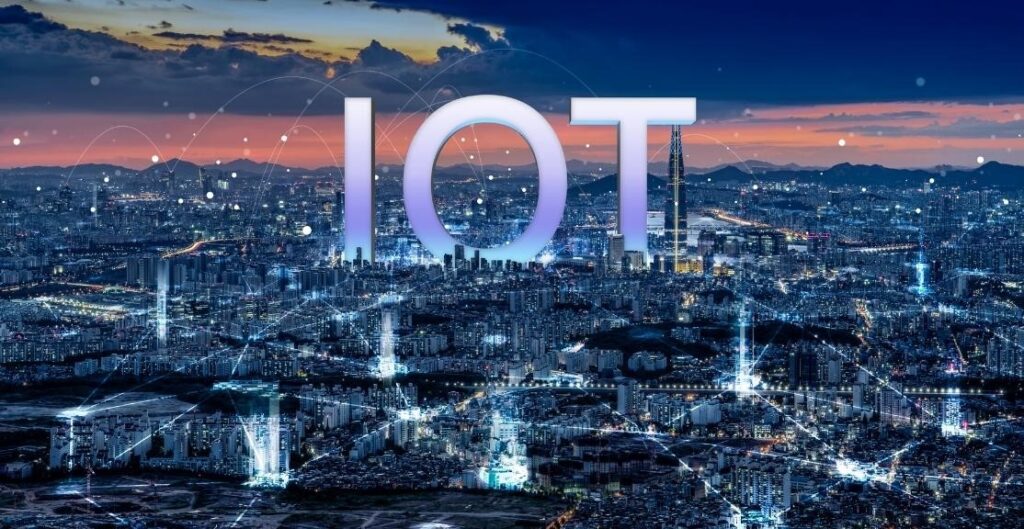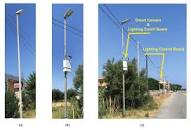By Phillip Dodd, Technology Lead IIoT Engineering Infrastructure & Security, Fiberroad Technology
A smart city pole can be equipped with a multitude of different technologies. It can monitor and control lighting in real time, based on weather conditions, pedestrian and vehicular traffic. It can also control lights remotely with dimming capabilities, or set them to run at certain levels at specific times of the day. Another benefit of a smart city pole is its ability to act as an emergency button. It also incorporates a camera that can capture day-and-night images and video.
A smart city pole also has the ability to detect and report crime. It can also send alerts and messages to the public, such as warnings of dangerous situations. It can even activate an announcement speaker to broadcast emergency messages. Additionally, it can serve as a recharge station for mobile phones and battery-powered vehicles. In addition to these features, smart city poles are also equipped with digital signage and sensors that monitor traffic, crime, parking and weather conditions.

LED Street Lighting
Intelligent Street Lighting Systems and smart city poles work together to control light intensity and brightness. A central control board generates commands and relays them to the LED driver and lamp. This control board can be programmed to operate on an event-based schedule, or use a daily lighting profile to automatically adjust light intensity. Depending on the application, the system can be set to automatically control a single pole or group of poles.
Smart city poles can include integrated cameras, audio sensors, and LED light fixtures. Some even have a digital signage or announcement system. They can also charge mobile phones and battery-powered vehicles, and have a built-in two-way communication system with on-site security. Additionally, the technology allows the pole to monitor traffic, crime, and parking conditions.
Cities are making a huge investment in smart LED fixtures for street lights. The new bulbs will soon be able to detect an upcoming thunderstorm, locate parking spaces, and monitor air quality. Smart LED lights will save cities tons of energy. Furthermore, they could turn a profit by using the data collected from the sensors installed in the poles. While some cities are making big moves, there are also some major flaws to watch out for. One of the most common mistakes cities make is spending too much money on the project and not delivering what they promise.
Light Management
Intelligent street lighting systems and smart city poles use technology to improve the efficiency of street lights. These new devices automatically adjust brightness and switching modes depending on the current conditions. Smart city poles and street lighting systems use sensor technology to detect traffic patterns and crime, and they can connect to the city’s security department to send alerts when crime or emergencies occur. They can also provide early warnings when people are in danger, such as if they have fallen into an open sewer. Multimedia devices on these poles can also be used to display advertising and public service messages.
The technology that controls smart city poles and street lights is based on wireless and wired communication networks. These networks enable the system to communicate between poles and a central server. They can also be installed on existing street light installations and retrofitted. With the ability to collect and share data, smart city poles and street lighting can be a valuable revenue source for local governments.
A smart city pole can be configured to adjust light levels based on traffic patterns, weather conditions and human presence. The system can also establish the right lighting levels based on a specific time, day or event. This can lead to considerable energy savings. The system can also provide operators with near real-time status information of each street light, and instant notifications of faults. This reduces the need for night patrols and frequent truck rolls.
Intelligent Street Lighting
Intelligent Street Lighting Systems (ITS) can be connected to other Internet-of-Things (IoT) devices near the pole. These can include cameras, audio sensors, and LED messaging systems. These systems can also be equipped with other technologies, such as infrared technology and seismic sensors. These systems are capable of providing sophisticated user interactivity and advanced scheduling functions. They also integrate sensors and controls to form a self-adaptive distributed network that can automatically adapt to the changing road conditions. They also have wireless radio modules that enable them to operate in different modes. The wireless radio module in the controller is typically located in a mesh network, which provides high reliability.
Smart street lighting systems are a key part of smart city projects. They help cities save billions of dollars in energy and maintenance costs and open up new revenue streams. For these projects to be successful, however, they must adhere to the highest standards and provide value for money. With these systems, cities can reduce energy bills while ensuring that the public will always have adequate illumination.
Smart cities are evolving fast. Many cities have begun the transition to smart street lights. These systems allow residents to access different types of information and control them through the smart lighting platform. They can also control the operations of the city, including the lighting of streets. Intelligent street lighting solutions can also increase revenues and reduce costs by improving the quality of life for citizens.

Internet of Things
Smart city poles and street lighting systems can be connected to the Internet of Things. These systems allow for real-time data monitoring and control of lighting. In addition, they can help reduce energy consumption and costs. A single pole may contain several different smart city solutions, including cameras, audio sensors, and LED messaging systems. Some can even integrate earthquake sensors and infrared technology.
An IoT based street lighting system is a networked digital lighting system that uses individual lights as network node assemblies. It collects and transmits data through a wireless communication network. The system comprises a three-layer hierarchical model: the lower layer consists of end nodes installed on the street lights and perform sensing and measurement functions. The second layer provides connectivity to remote servers. Finally, the application layer consists of a server and remote control system. All of these components work in conjunction to optimize the street lighting system.
With the help of IoT, smart street lighting systems can provide remote adaptive lighting control. This will allow the systems to maximize operational efficiency. By integrating various sensors and controls, smart street lighting systems can provide real-time feedback on the status of the lighting system. Smart street lighting systems also offer convenient dimming control, a suite of control features, and proactive maintenance planning.
Smart Street Lights
Intelligent Street Lighting Systems (ISLS) are pole-mounted fixtures that can monitor and detect traffic and environmental conditions. These solutions have the potential to improve city infrastructure and security. Smart poles can also serve as communication points between city officials and residents. For example, they can be outfitted with a camera and microphone that record HD images, video, and audio to alert residents and drivers of potential dangers.
Smart pole systems integrate information and communication technologies with LED lighting. They can provide traffic guidance and parking instructions, improve ground traffic flow, and collect evidence in case of an emergency. They can also communicate information to a central command center in real time. Moreover, the technology can be customized to meet various application contexts.
The latest technology enables smart city poles to communicate with nearby systems via wireless communication networks. They can also act as emergency communication elements by displaying announcements and digital signage, and can also recharge mobile phones and battery-powered vehicles. They are also equipped with smart sensors and can monitor crime, traffic, parking, and weather.









































